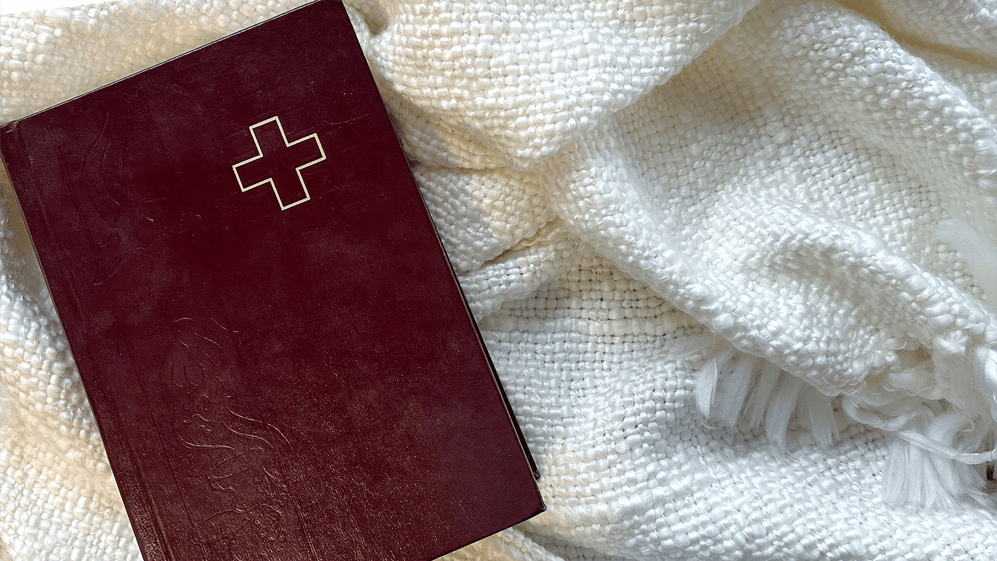Beloved Lutheran hymnals have a long history, dating all the way back to 1524 in Germany. Each variation has been used for different purposes, such as a home devotional that eventually led to a worship hymnal. Learn more about the beauty of Lutheran hymnals from the very first edition to Lutheran Service Book today with this excerpt from Lutheran Service Book: Companion to the Hymns.
Historic Lutheran Hymnals
The hymns of Martin Luther and his followers circulated first on broadsheets and by word of mouth. Indeed, one of their distinctive virtues was that, being readily memorized, they could continue to circulate even in the face of official proscription. The first booklet collections of Lutheran hymns appeared in 1524, the work of enterprising printers in Nürnberg, Augsburg, and Erfurt before the first Wittenberg hymnal, the Geystliche gesangk Buchleyn, appeared with Luther’s preface later that year. Luther continued to work with Johann Walter and others to revise and augment the hymnal, supplying prefaces and organizing the hymns in the Wittenberg hymnal of 1529 (with new editions in 1533, 1535, and 1543), the Begräbnisgesänge (burial hymns) of 1542, and the 1545 Geystliche Lieder published in Leipzig by Valentin Babst, containing 129 hymns and other pieces, including forty-five by Luther.
After Luther’s death, Lutheran hymnals continued to expand, though still with Luther’s name on the title page and one or more of his prefaces at the front in addition to his hymns. The 1569 Nürnberg hymnal published by Valentin Fuhrman, for example, included 213 hymns, and his 1597 hymnal 330. The hymnals—overwhelmingly the work of individual printers rather than officially mandated productions—enjoyed phenomenal success in the sixteenth-century press, both in absolute numbers and in comparison with other kinds of Lutheran literature. During the sixteenth century, there were some 192 editions of the complete German Bible printed and 252 of the New Testament, 330 printings of the Small Catechism appeared, and all Lutheran prayer books together appeared in 373 editions. Over the same span, there were some 1,500 Lutheran hymn editions. These figures not only reflect economic constraints—whereas a German New Testament cost three weeks’ wages for a laborer, a hymnal could be had for less than a day’s pay—but also attest to the central place of the hymns in Lutheran churches, schools, and homes.
Hymns and Lutheran Pedagogy
Beyond their use in the public worship of the congregation, hymns occupied a prominent place in Lutheran schools and pedagogy in general. The first Wittenberg hymnal of 1524, with its four-part settings of Luther’s hymns, had been intended for school use, in order to “give the young . . . something to wean them away from love ballads and carnal songs and to teach them something of value in their place.” In addition to the role of the choirs in leading the liturgy in general, the weekday offices of Matins and Vespers were the particular province of the schoolboys, who were supplied with the ancient Latin hymns as well as new Lutheran ones by Philip Melanchthon and his students. In light of the fact that all higher education was conducted in Latin, with strict punishments for students who lapsed into the vernacular even outside the classroom, what was surprising was not that the schoolboys sang in Latin both in school and in church but that they sang the German hymns as well.
From 1529 onward, Lutheran hymnals contained a section of “catechism hymns.” Beginning with his hymns on the Ten Commandments and the Creed, Luther had by the end of his life composed hymns corresponding to each part of the Small Catechism. These were expanded in the next generations with Nicolaus Herman’s hymn on absolution (“ ‘As Surely as I Live,’ God Said,” LSB 614) and Ludwig Helmbold’s summary of the entire catechism (“Lord, Help Us Ever to Retain,” LSB 865). In keeping with Luther’s advice that pastors teach these hymns as soon as the children had mastered the underlying biblical and creedal texts, the catechism hymns, together with Luther’s “Lord, Keep Us Steadfast in Your Word” (LSB 655), were appointed for use in schools as well as in the Sunday afternoon catechism services.
Lutheran Hymns in the Home
The first generations of Lutherans did not expect that hymns should be confined to the church and the school or even find their primary use there. The earliest collections of Lutheran hymns advertised themselves for private lay use, for “constant exercise and meditation,” and for use by parents in instructing their children. The success of hymnal editions in the sixteenth-century press is explained not by official expenditure but by private demand, as the laity purchased hymnals to use at home. The early Lutheran hymnal was primarily a household book rather than a church book.
The domestic use of the hymnal was reflected in its contents. Luther’s hymnals began the practice of placing collects after many of the hymns, not because they were sung together in public worship, but as an aid to private devotion. The internal organization of Lutheran hymnals in the second half of the sixteenth century, such as the 1569 Frankfurt (Oder) Geistliche Lieder, gave particular prominence to hymns for use in daily life: hymns to sing upon rising and before going to bed, before and after meals, and on the deathbed. Tellingly, the first two hymns in the section on “Christian life and conduct” were the settings of Psalms 127 and 128 from Luther’s hymnals, with their praise of marriage and family life.
Blog post adapted from Lutheran Service Book: Companion to the Hymns, volume 2 © 2019 Concordia Publishing House. All rights reserved.
Browse all of the Lutheran hymnals offered today through Concordia Publishing House by clicking the button below.













.jpg?width=50&height=50&name=IMG_20220621_160541_456%20(1).jpg)
